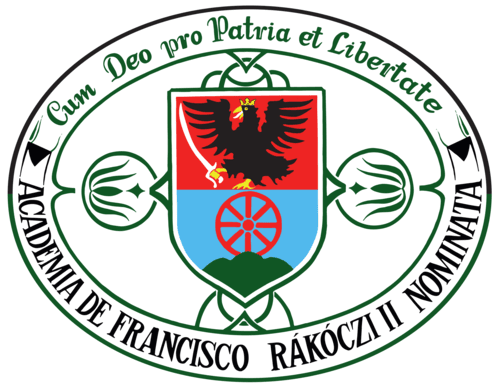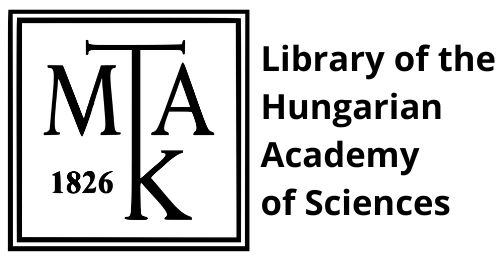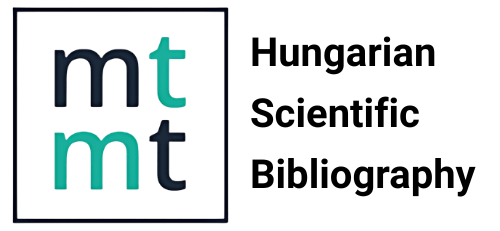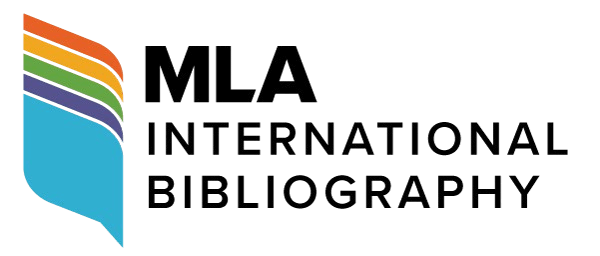Grammatical phenomena of language contact in the language use of Hungarians living in the Transylvanian Plain (Mezőség)
DOI:
https://doi.org/10.58423/2786-6726/2022-2-124-148Keywords:
language contact, bilingualism, diaspora, grammatical contact phenomenon, plurals, double negation, suffix borrowingAbstract
The paper discusses the grammatical aspects of language contact in the language use of Hungarian communities in the Transylvanian Plain on the basis of living language data. The database has been created as part of a larger, more extensive research in the course of which the language shift processes of the Hungarian-Romanian bilingual speakers living in the diasporic communities of the Transylvanian Plain are being analysed and which has been continuously increased in the past three years. The research has been carried out by narrative interviews recorded in nine communities by now, with native Hungarian speakers of different ages who also speak Romanian to a certain extent. These communities have provided a varied field for bilingual researches from a demographical point of view but in terms of linguistic environment and the extent of bilingualism as well. Up to now the language contact researches have mainly been directed towards lexical and phonetical aspects, and for a while they have been extended to semantical aspects too, but as far as grammatical contact phenomena are concerned, we have quite few results at the moment. On basis of the data presented in the paper the analysed phenomena can be explained in certain cases with the influence of the dominant second language, respectively the Romanian, or with the uncertainty rising from the running of two language systems at the same time. The phenomena occuring most often as results of the Romanian language effect are the syntactical phenomena and those regarding word order, the use of plurals in a different way from the standard use, suffix confusions, suffix borrowings, redundancy and missing elements. Redundancy phenomena contain the use of unnecessary articles, special double negation, redundancy of negative particles, missing elements mean the lack of the modal verb in conditional structures. In certain cases, for example at the phenomenon of suffix borrowing, the parallel structures can be found in Romanian as well, so this can be considered language contact phenomenon, just like the lack of modal verbs in conditional structures. Other phenomena, such as the specific SVO word order characteristic of the Romanian language, or specific use of plurals are viewed as relative language contact phenomena, as these can be observed in the language use of monolingual Hungarian speakers too, though more rarely than in the language use of bilinguals. In order to completely understand the processes of language contacts further researches of the grammatical contact phenomena are needed.
References
Alexics György, 1888. Magyar elemek az oláh nyelvben [Hungarian Elements in the Wallachian Language]. Budapest. (In Hungarian).
Bakos Ferenc, 1952a. A román nyelv [The Romanian Language]. Magyar Nyelvőr [Hungarian Language Guide] 76: 342–347. (In Hungarian).
Bakos Ferenc, 1952b. A román nyelv [The Romanian Language] II. Magyar Nyelvőr [Hungarian Language Guide] 76: 342–347. (In Hungarian).
Bakos Ferenc, 1970. A végartikulus alakulása román jövevényszavainkban [Forming of Articles in our Romanian Loan-Words]. Magyar Nyelv [The Hungarian Language] 66. 178–183. (In Hungarian).
Bakos Ferenc, 1982. A magyar szókészlet román elemeinek története [History of the Romanian Elements of the Hungarian Vocabulary]. Budapest: Akadémiai Kiadó (In Hungarian).
Balázs László, 1965. Aspecte ale interacţiunii limbilor. Relaţii lingvistice româno-maghiare [Aspects of the Interaction of Languages. Romanian-Hungarian Linguistic Language Contacts]. Studia Universitatis Babeş-Bolyai Series Philologia Fasc. 1. 80–91. (In Romanian).
Bartha Csilla, 1999. A kétnyelvűség alapkérdései [The Basics of Bilingualism]. Budapest: Nemzeti Tankönyvkiadó (In Hungarian).
Benő Attila, 2004. A kölcsönszó jelentésvilága. A román-magyar nyelvi érintkezés lexikai-szemantikai kérdései [The Semantic Field of Loan-words. Lexical and Semantical Aspects of the Romanian-Hungarian Language Contact]. Kolozsvár: Erdélyi Múzeum-Egyesület (In Hungarian).
Benő Attila, 2013. Egy lehetséges relatív kontaktusjelenség az erdélyi magyar nyelvválto-zatban: az általános alany kifejezése egyes szám második személyű igealakkal [A Possibly Relative Language Contact Phenomenon in the Hungarian Spoken in Transylvania: Expressing General Subject by Second Person Singular Verb Form]. In: Agyagási Klára – Hegedűs Attila – É. Kiss Katalin szerk. Nyelvelmélet és kontaktológia 2. [Language Theory and Contactology 2.]. Piliscsaba: PPKE BTK Elméleti Nyelvészeti Tanszék – Magyar Nyelvészeti Tanszék, 13–26. o. (In Hungarian).
Benő Attila, 2014. Kontaktusjelenségek az erdélyi magyar nyelvváltozatokban [Language Contact Issues in the Hungarian Spoken in Transylvania]. Kolozsvár: Erdélyi Múzeum-Egyesület (In Hungarian).
Blédy Géza, 1942. Influenţa limbii române asupra limbii maghiare [The Influence of Romanian Language on the Hungarian Lanugage]. Sibiu: Universitatea „Regele Ferdinand. I.” Cluj-Sibiu. (In Romanian).
Csernicskó István, 1998. A magyar nyelv Ukrajnában (Kárpátalján) [The Hungarian Language in Ukraine (Subcarpathia)]. Budapest: Osiris Kiadó – MTA Kisebb-ségkutató Műhely (In Hungarian).
Deme László – Imre Samu szerk., 1968–1977. A magyar nyelvjárások atlasza I–VI [The Atlas of Hungarian Dialects I–VI]. Budapest: Akadémiai Kiadó (In Hungarian).
Fancsaly és mtsai = Fancsaly Éva – Gúti Erika – Kontra Miklós – Molnár Ljubic Mónika – Oszkó Beatrix –Siklósi Beáta – Zagar Szentesi Orsolya, 2016. A magyar nyelv Horvátországban [The Hungarian Language in Croatia]. Szerk. Kontra Miklós. Budapest–Eszék: Gondolat Kiadó – Media Hungarica Művelődési és Tájékoztató Intézet (In Hungarian).
Göncz Lajos, 1999. A magyar nyelv Jugoszláviában (Vajdaságban) [The Hungarian Language in Yugoslavia (Voivodship)]. Budapest–Újvidék: Osiris Kiadó – Forum Könyvkiadó – MTA Kisebbségkutató Műhely (In Hungarian).
Kádár Edit, 2000. Etnolingvisztikai vitalitás a szórványban (Oltszakadát) [Ethno-linguistic Vitality in the Diaspora (Oltszakadát)] Nyelv- és Irodalomtudományi Közlemények [Journal of Linguistic and Literary Studies] 64/1–2: 69–108. o. (In Hungarian).
Kiss Jenő, 1995. Társadalom és nyelvhasználat [Society and Language Use]. Budapest: Nemzeti Tankönyvkiadó (In Hungarian).
Lambert, Wallace E., 1974. Culture and language as factors in learning and education. In: Aboud, F. & Meade, R. D. eds. Cultural Factors in Learning. New York: Academic Press. https://files.eric.ed.gov/fulltext/ED096820.pdf (download date: 15th March 2021).
Lanstyák István, 2000. A magyar nyelv Szlovákiában [The Hungarian Language in Slovakia]. Budapest–Pozsony: Osiris Kiadó – Kalligram Könyvkiadó – MTA Kisebbségkutató Műhely (In Hungarian).
Lanstyák István, 2009. A magyar beszélt nyelv sajátosságai [Characteristics of the Hungarian Spoken Language]. Pozsony–Bratislava: Stimul (In Hungarian).
Lanstyák István, 2011. A magyar nyelv szlovákiai változatainak jellemzői [Characteristics of the Hungarian Language in Slovakia]. In: Szabómihály Gizella – Lanstyák István, szerk. Magyarok Szlovákiában [Hungarians in Slovakia] VII. Kötet. Nyelv. Somorja: Fórum Kisebbségkutató Intézet, 55–82. o. (In Hungarian).
Lanstyák István, 2016. Abszolút és relatív kontaktushatás [Absolute and Relative Language Contact Effect]. In: É. Kiss Katalin – Hegedűs Attila – Pintér Lilla szerk. Nyelvelmélet és kontaktológia [Language Theory and Contactology] 3. Budapest–Piliscsaba: PPKE Szent István Társulat – Az Apostoli Szentszék Kiadója, 46–66. o. (In Hungarian).
Márton Gyula, 1972. A moldvai csángó nyelvjárás román kölcsönszavai [Romanian Loan-Words in the „Csángó” Dialect of the Romanian Moldavia]. Bukarest: Kriterion Könyvkiadó (In Hungarian).
Márton Gyula – Péntek János – Vöő István, 1977. A magyar nyelvjárások román kölcsönszavai [The Romanian Loan-Words in the Hungarian Dialects]. Bukarest: Kriterion (In Hungarian).
Murádin László – Juhász Dezső szerk., 1995–2010. A romániai magyar nyelvjárások atlasza I–XI [The Atlas of Hungarian Dialects in Romania I–XI]. Budapest: [I–II] Magyar Nyelvtudományi Társaság, [III–XI] Magyar Nyelvtudományi Társaság – Pharma Press Kiadó (In Hungarian).
Péntek János, 1981. A román-magyar nyelvi kölcsönhatás néhány szemantikai vonatkozása [Semantic Aspects of the Romanian-Hungarian Language Contact]. Nyelv- és Irodalomtudományi Közlemények [Journal of Linguistic and Literary Studies]. 25/1: 77–81. o. (In Hungarian).
Péntek János, 1997. Kontaktusjelenségek és folyamatok a magyar nyelv kisebbségi változataiban [Contact Phenomenon and Processes in Hungarian as a Minority Language] Nyelv- és Irodalomtudományi Közlemények [Journal of Linguistic and Literary Studies] 41/1: 37–50. o. (In Hungarian).
Péntek János – Benő Attila, 2020. A magyar nyelv Romániában (Erdélyben) [The Hungarian Language in Romania (Transylvania)]. Kolozsvár – Budapest: Erdélyi Múzeum-Egyesület – Gondolat Könyvkiadó (In Hungarian).
Szépfalusi és mtsai = Szépfalusi István – Vörös Ottó – Beregszászi Anikó – Kontra Miklós, 2012. A magyar nyelv Ausztriában és Szlovéniában [The Hungarian Language in Austria and Slovenia]. Kontra Miklós, szerk. Budapest–Alsóőr–Lendva: Gondolat Kiadó – Imre Samu Nyelvi Intézet – Magyar Nemzetiségi Művelődési Intézet (In Hungarian).
Tamás Lajos, 1966. Etymologisch-historisches Wörterbuch der ungarischen Elemente im Rumänischen Etimological-Historical Dictionary of the Hungarian Elements in Romanian]. Budapest: Akadémiai Kiadó (In German).
Zsemlyei János, 1969. Román kölcsönszavaink -uj szóvégének kérdéséhez [To the Issue of the Word Ending –uj in Romanian Loan-words]. Nyelv- és Irodalomtudományi Közlemények [Journal of Linguistic and Literary Studies] 12/1: 117–121. o. (In Hungarian).
Zsemlyei János, 1979. A Kis-Szamos vidéki magyar tájszólás román kölcsönszavai [Romanian Loan-words of the Hungarian Dialect of Kis-Szamos Region]. Bukarest: Kriterion Kiadó (In Hungarian).
Zsemlyei János, 1995. Román tükörszavak, tükörkifejezések és hibridszavak a romániai magyarság nyelvhasználatában [Romanian Translation Loans, Loan Expressions and Hybrid Words in the Language Use of Hungarians in Romania]. In: Kassai Ilona szerk. Kétnyelvűség és magyar nyelvhasználat [Bilingualism and Hungarian Language Use]. A 6. Élőnyelvi Konferencia előadásai. 1995. 245–252. o. (In Hungarian).
Downloads
Published
How to Cite
Issue
Section
License
Authors retain copyright and grant the journal the right of first publication. The work is simultaneously licensed under a Creative Commons Attribution 4.0 International License (CC BY 4.0), which permits others to share the work with appropriate credit given to the author(s) and the initial publication in this journal.

















